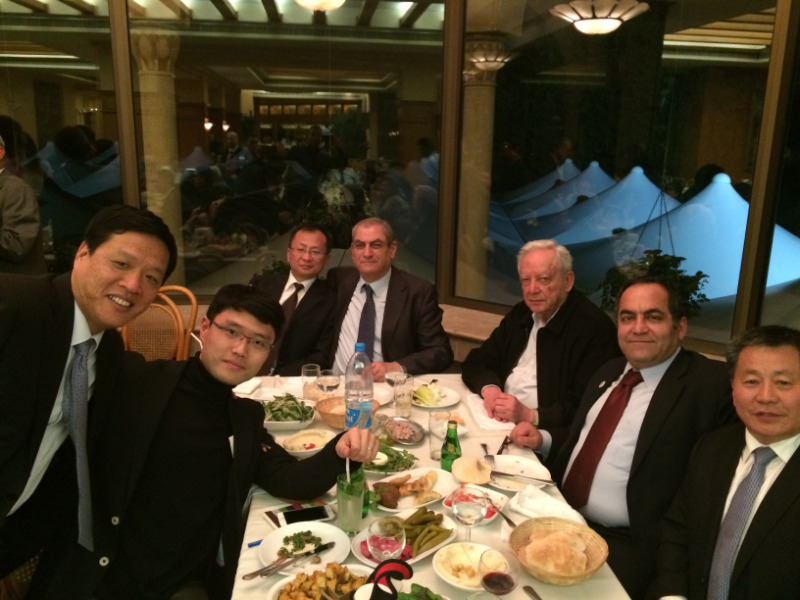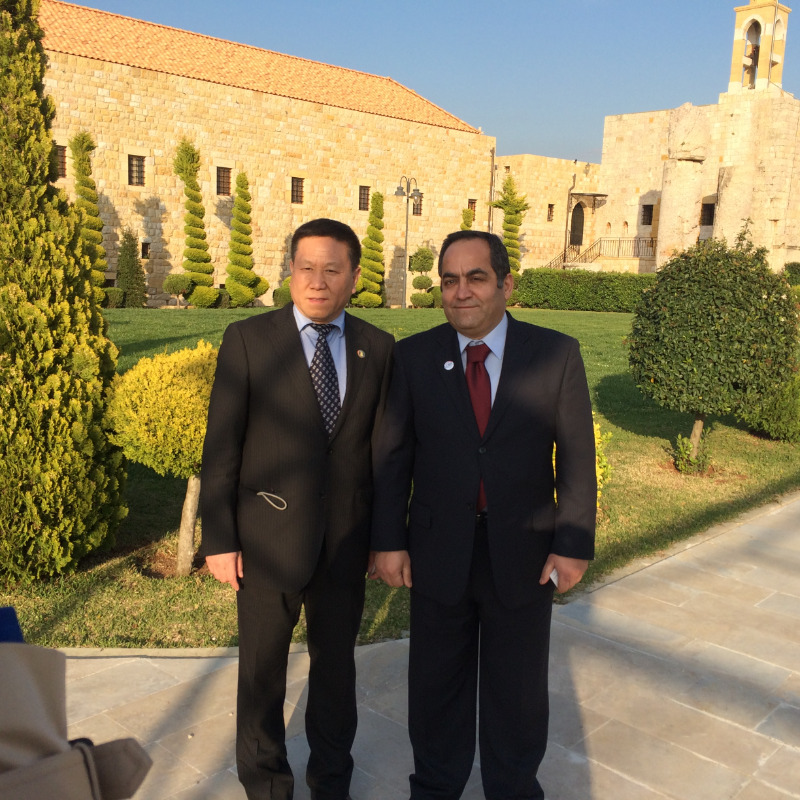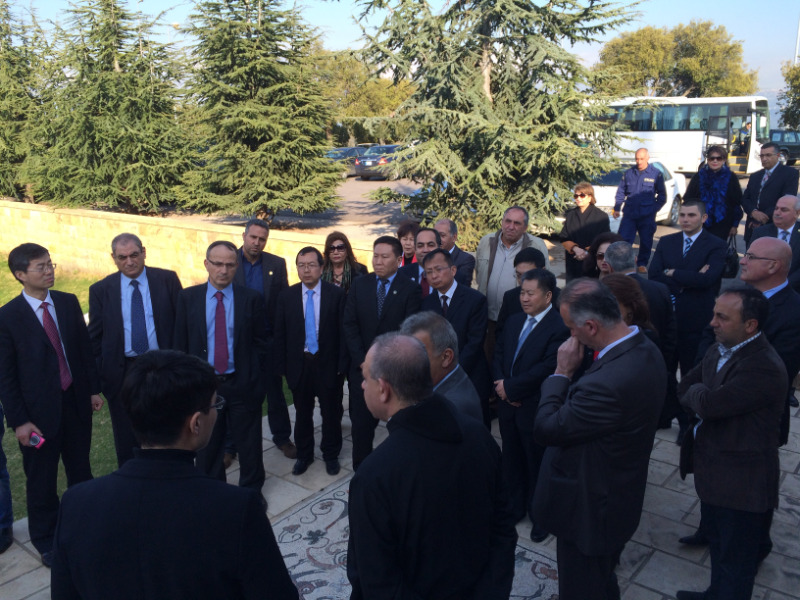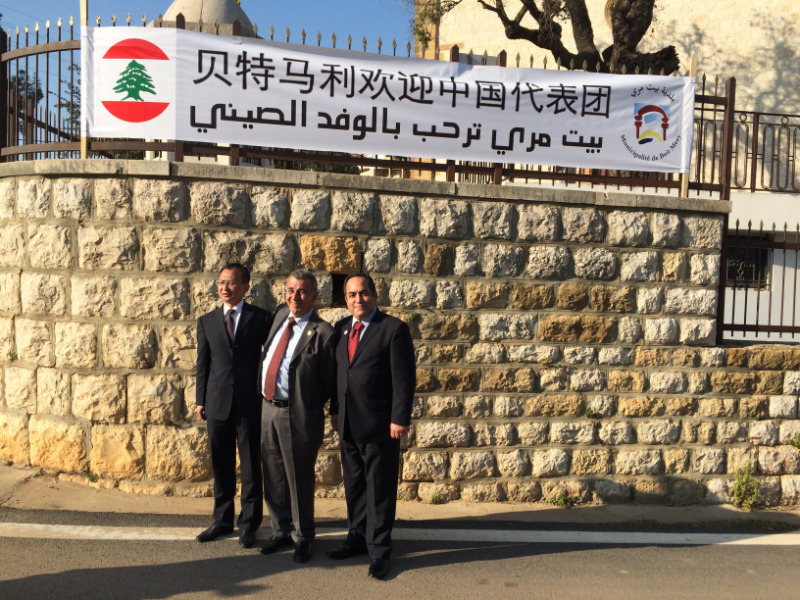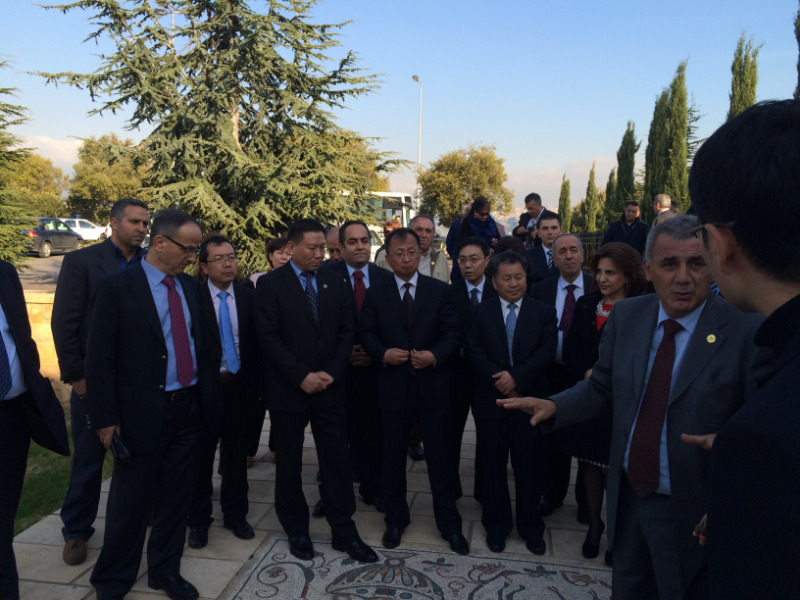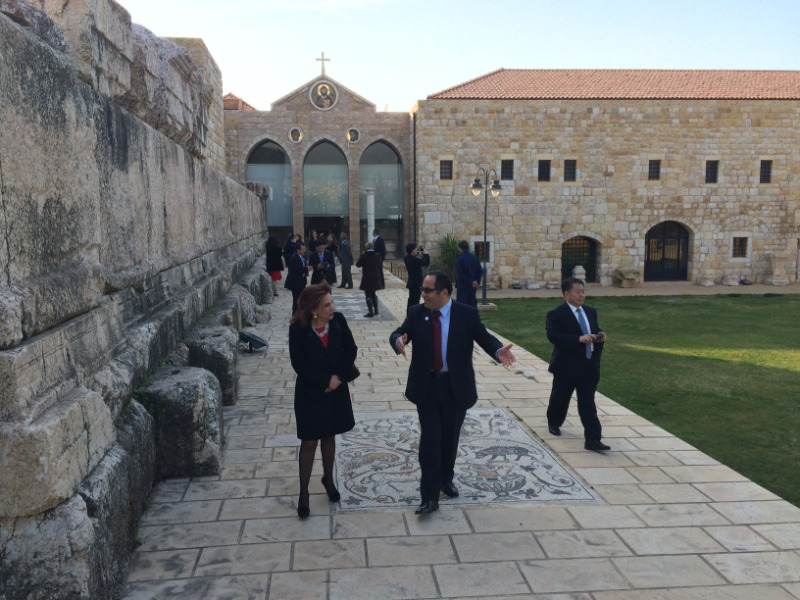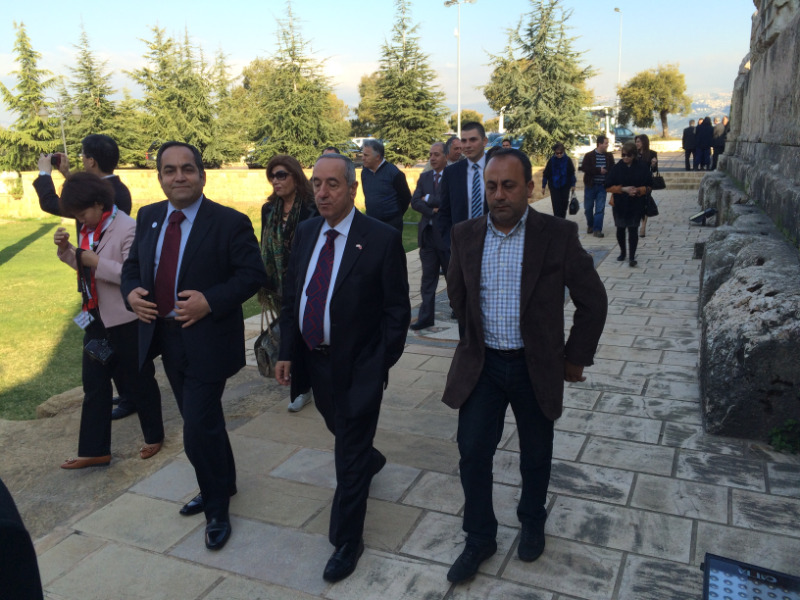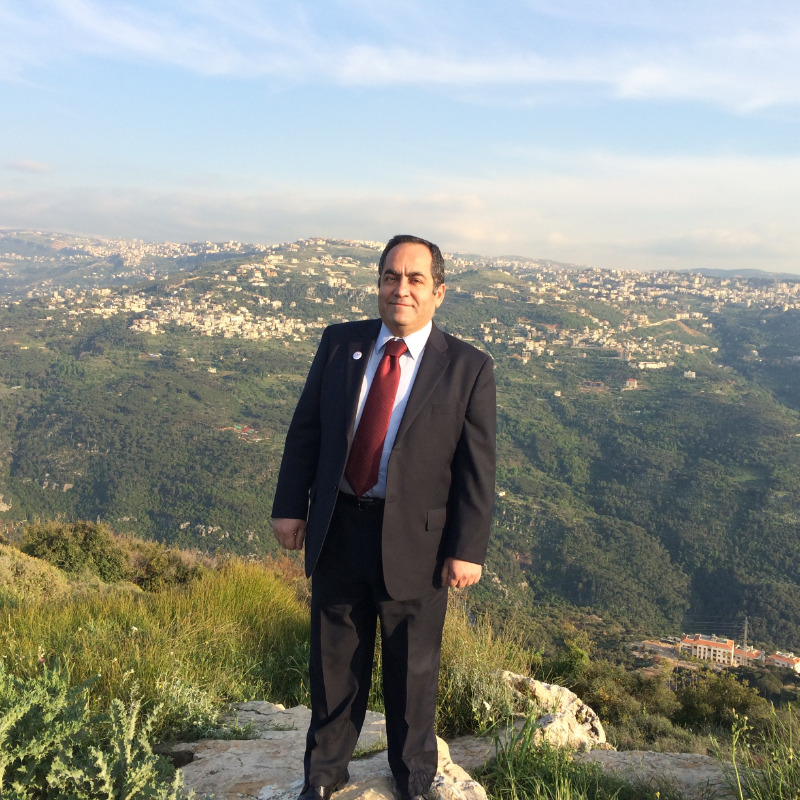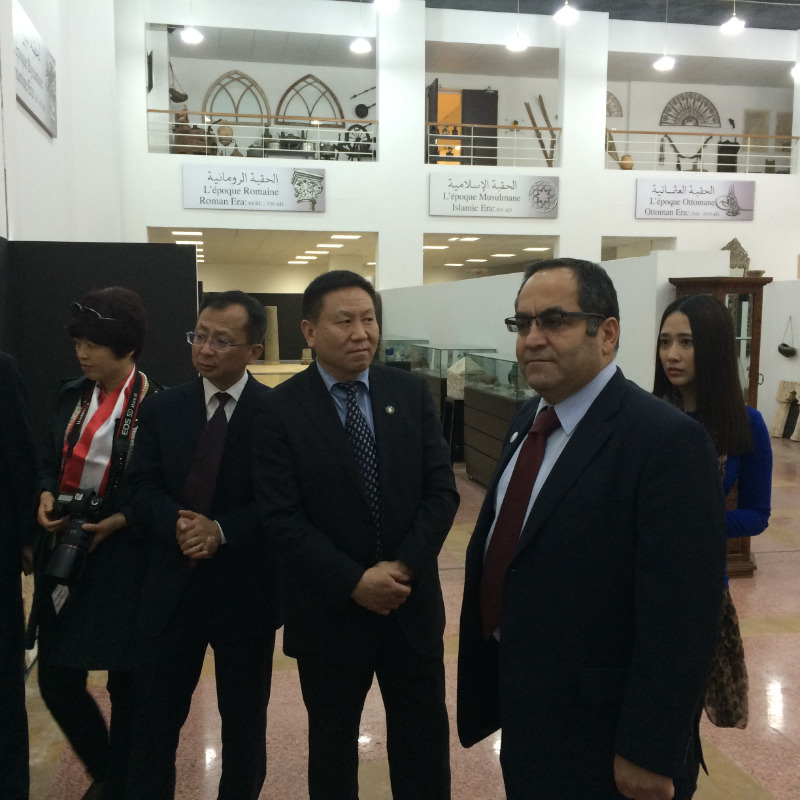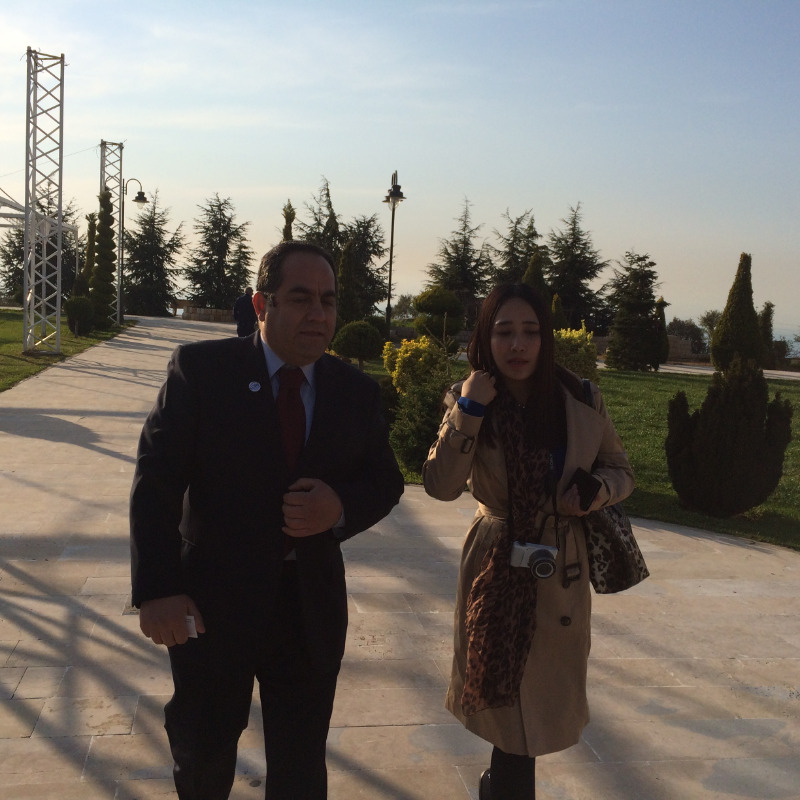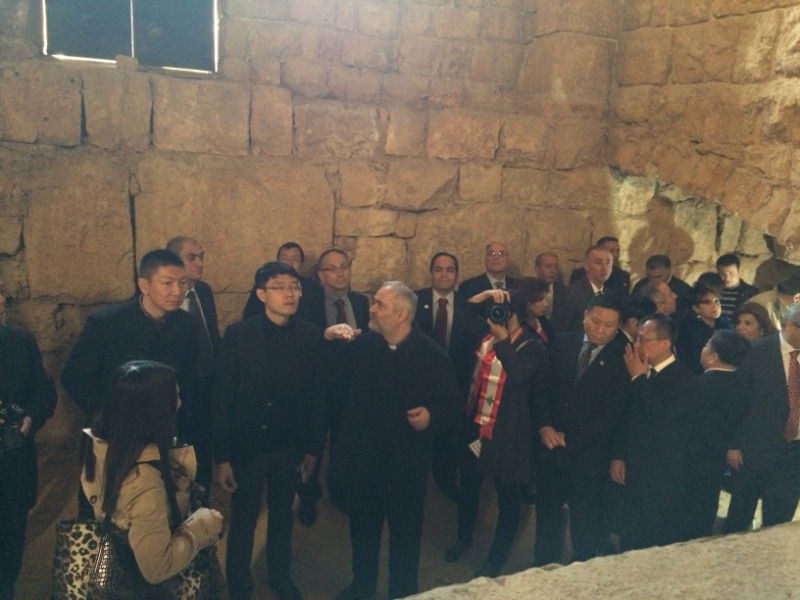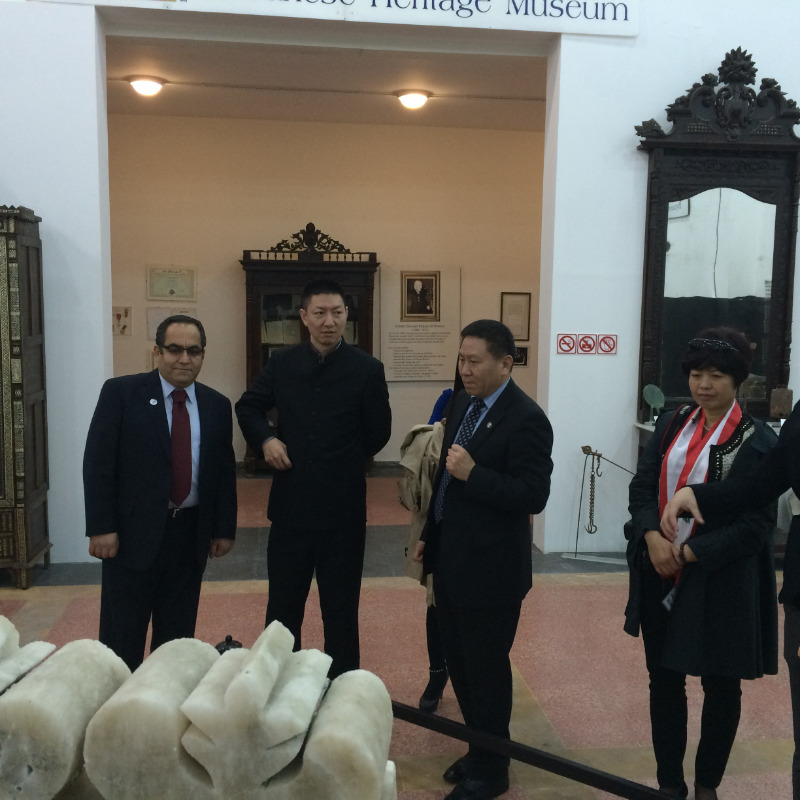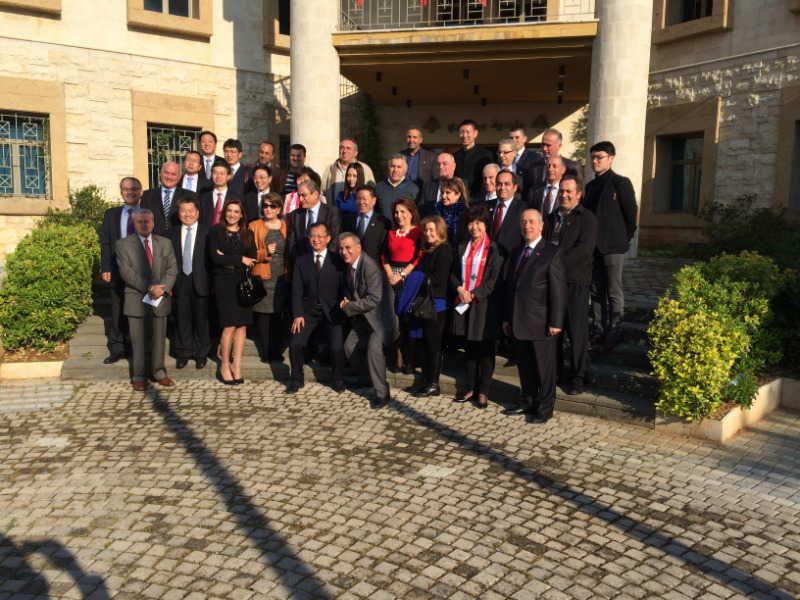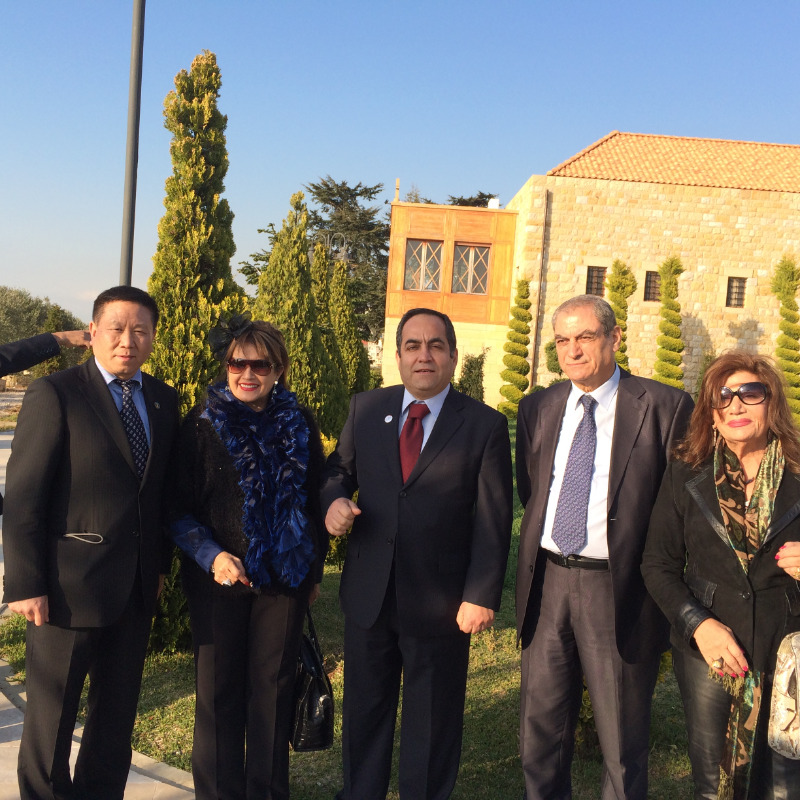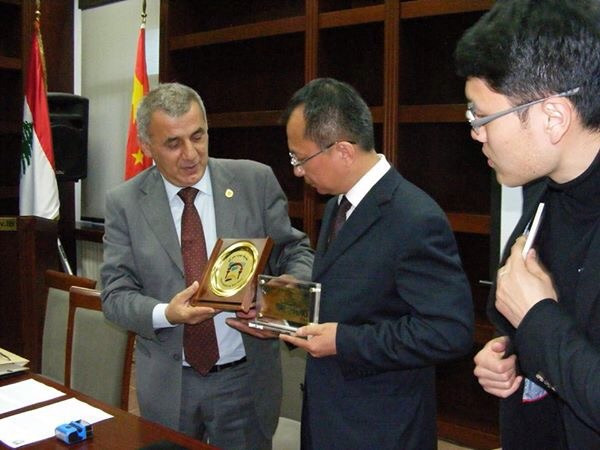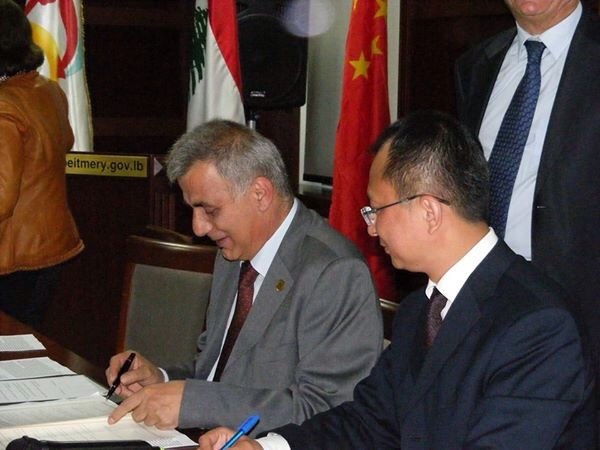The President of the Lebanese-Chinese Business Association, Mr. Ali Mahmoud El-Abdallah, at the signing ceremony of a memorandum of understanding for the twinning protocol between Beit Marri and Yinan Chinese Municipality after an invitation from the Mayo
The President of the Lebanese-Chinese Business Association, Mr. Ali Mahmoud El-Abdallah, at the signing ceremony of a memorandum of understanding for the twinning protocol between Beit Marri and Yinan Chinese Municipality after an invitation from the Mayor of Beit Marri, Mr. Antoine Marouni
Beit Mery in Brief
Beit Mery is a model town whose civilization extends back to ancient times before Christ. It is located on a plateau 750 meters above sea level and forms the eastern façade of Beirut, being 17 kilometers away from it.
Its unique location on the shoulder of the capital and in the heart of the country made it a home for many civilizations that succeeded each other in the Middle East, beginning with the Greek and Phoenician eras, followed by the Roman, Crusader, and Ottoman periods, whose traces are still visible among them, the famous ruins of Deir Al-Qalaa.
This plateau, which dazzles its visitors, offers a breathtaking 360-degree panoramic view. From where you stand, you can turn north to gaze upon the mountains of Keserwan and Jbeil, slowly descending to meet Our Lady of Harissa. You can also see the Lebanese coastline from Batroun and Byblos all the way to Khalde, Naameh, and Damour. Turning west, Beirut will astonish you at night with its mosaic of colors, adorned by the movement of its port and the lights of ships in the sea. When you turn south, the international airport appears before you, with the gleam of aircraft coming and going, while your eyes are drawn to the beauty of the towns of Choueifat, Aley, Bhamdoun, and Soufar, until you reach eastward the steadfast mountain draped in its white robe like a loyal guardian — Mount Sannine, which refreshes you with its gentle breeze and shades the forests of the Beirut Valley, located within the Beit Mery area, with its sunlight infused with fragrance, blending the freshness of these forests with their bright colors.
The Eastern Side of Saint John’s Monastery “Deir Al-Qalaa” built on the ruins of the Roman temple
When you visit the town, you feel as if you are the master of the house. The strong bond among the people of the town is equally reflected in their hospitality toward guests from wherever they come. Their sincere welcome touches the visitor’s heart and encourages them to stay in the town both in summer and winter.
Living in Beit Mery year-round is a pressing necessity for its visitors, as its mild climate and elevation above the city’s pollution make it a healthy resort. Its proximity to the capital has led many to choose it as a permanent residence, not to mention the multiple routes that lead to it.
You can reach Beit Mery from Sin El Fil to Mansourieh to Beit Mery; or from Jdeideh to Fanar to Beit Mery; or from Nahr El-Mot to Roumieh to Beit Mery; or from Jal El Dib to Joura El Blout to Brummana to Beit Mery; or from Hammana to Ras El-Metn to Beit Mery.
The municipal area of Beit Mery extends to link the Beirut River with the Nahr El-Mot River, and the neighborhoods in both towns intertwine with promising progress toward the future, organized by active committees in cooperation with the municipal council. These neighborhoods include:
Eastern, Hara, Roueisseh–Souk, Western, Deir Al-Qalaa–Nabeh Al-Saadeh, Kfara, The Good Shepherd, Ain Najm, Al-Montazah, Monteverde, the Industrial Valley, and Tallet Ain Saadeh.
The first municipal council in Beit Mery was formed in 1914, headed by Assaad Boutros Raad, followed by Anton Khoury, Daoud Bechara, Caesar Barakat, Tannous Freiha, Iskandar Al-Nakkash, Naseeb Raad, Joseph Massoud Raad, George Addeh, Antoine Assaf, and the current president Antoine Maroun.
Naeem Andria was elected the first mokhtar (village head) of Beit Mery in 1928, followed by Boulos Akl in 1933, who remained in office until his death in 1997. Beshara Al-Samrani was elected mokhtar of Ain Saadeh for a long period, succeeded by Beshara Semaan, then George Bou Aoun, who passed away recently.
In the municipal elections, three positions were appointed for Beit Mery’s mokhtars: in the first term, Elias Saba and Joseph Bechara Raad were elected; in the second term, Elias Saba was re-elected alongside Beshara Bou Dames; and in the current term, Shia Fouad Madi and Beshara Bou Dames were elected.
The name Beit Mery (or Ancient Beirut) goes back to the Semitic language, meaning Beito Morio or House of the Gods. It may have taken this name due to the Phoenician temple of the deity “Berith”, whose remains still stand in Deir Al-Qalaa to this day, or due to the numerous historical temples built there by successive civilizations — from the Assyrian, Phoenician, and Chaldean to the Roman and Byzantine. The temples of Astarte and Juno still attract visitors at Deir Al-Qalaa.
Ruins discovered around the temple
Notably, the archaeological area of Deir Al-Qalaa has today become Saint John Monastery for the Antonine Order, which, in cooperation with the municipality and the Ministry of Culture, has transformed this site into an exceptional tourist destination attracting visitors from all over the world. Very soon, the Deir Al-Qalaa International Festivals, which were suspended due to the events, will be revived.
Like many towns in Lebanon, Beit Mery celebrates a number of traditional annual festivals, most notably:
-
Feast of Saint Sassine (September 15)
-
Feast of Saint Elias (July 19)
-
Feast of the Virgin Mary (August 15)
-
Annual dinner for the Feast of Saint George (April)
In addition to the annual celebrations and festivals organized by local clubs and community associations.
No matter how long one speaks about this town, words will never do it justice — your visit is the best proof.
And when it comes to describing beauty words will always fall short.
